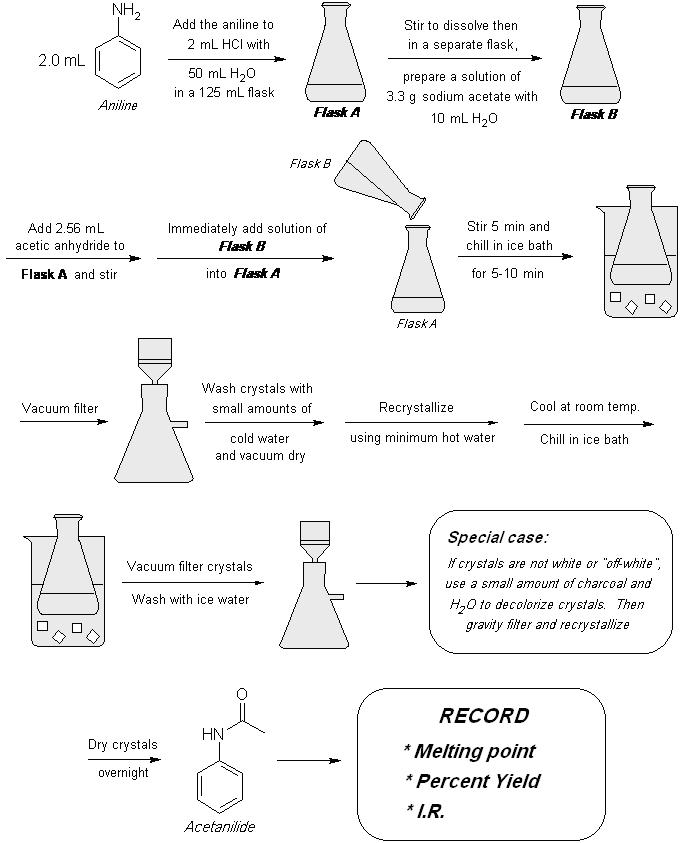الأخت دلوعه اليك موضوع عن الأنيلين وأتمنى أن نتواصل في التعاون ودعواتك Abstract
The kinetics of reactions between 1-halogeno-2,4-dinitrobenzene (halogen = F, Cl) and aniline were studied in toluene, acetone, dimethylsulfoxide and in toluene-acetone mixtures. Unexpectedly, when chlorine is the nucleofugue, the second rate coefficients, kA, in toluene shows a parabolic dependence on the amine concentration which indicates a third order in amine kinetic law, while in the dipolar aprotic solvent the dependence is linear. Small additions of acetone to the solvent produce an important increase in rate, much greater then the increase in the permittivity, which is surprising on the basis of the classical effect of a dipolar medium on a dipolar transition state. The reactions with fluorine as the nucleofugue show similar behaviours. All these results are well explained in the frame of the “dimer nucleophile” mechanism.
Keywords: Aromatic nucleophilic substitutions, aprotic solvents, mixed aggregates, dimer nucleophile mechanism
Introduction
Aromatic nucleophilic substitutions (SNAr) by amines have been recognized to be extremely affected by the solvent.1,2,3 Their study is currently receiving increased interest since they constitute a suitable model to contribute to the understanding of the microscopic properties of solvent in reactions due the complex interactions between the amine, the substrate and/or the intermediate that occur involving the solvent molecules.4,5,6 The mechanisms of reactions in
ISSN 1551-7012 Page 95 ©ARKAT USA, Inc
Issue in Honor of Prof. R. Rossi and Prof. E. Rúveda ARKIVOC 2003 (x) 95-106
protic solvents are well established1 but are the SNAr in aprotic solvents those that exhibit most peculiar features to study specific and non-specific solvent effects.2 Evidences for nucleophile aggregation,7 substrate-nucleophile EDA complexes8 and other type of complexes9,10 have been reported by different authors when reactions were carried out in aprotic solvents. On the other hand, several attempts to establish empirical scale of microscopic parameters able to provide a quantitative description of solvent characteristic have been currently reported.11,12,13
Most of the previous studies on solvent effects in SNAr have been performed in pure solvents.1,2. Nevertheless, different studies aimed at the characterization of mixed solvents and the determination of the kinetic data of SNAr reactions in binary mixtures have been recently reported.4,14 Likewise, studies in solvent mixtures, which were held taking into account their hydrogen bond donor (HBD) or hydrogen bond acceptor (HBA) characteristics, were performed and discussed. ..+ XH NHRNO2NO2R XNO2NO2k1k -1+ NO2NO2X+NHRHB:Bk3 Bk2-NHRH2NHNHR2MHBS......P
Scheme 1
We have recently published unusual findings in SNAr carried out in aprotic solvents. Most of these “abnormal” results are characterized, among other features, by a third-order dependence on [amine] and can be consistently explained by a mechanism called the “dimer nucleophile mechanism”.7 In that mechanism, the dimer of the amine acts as a nucleophile forming an intermediate complex, a third molecule of amine assists the decomposition step (scheme 1). The intermediate is highly zwitterionic and the extra amine molecule should help to stabilize the developing charge in nonpolar aprotic solvents. The reaction with the monomer nucleophile is also possible, but the reaction with the dimer is faster because of its higher donicity..15,16
We have previously reported SNAr carried out in binary solvents such toluene-octanol,17a toluene-methanol,17b benzene-n-hexane and toluene-tetrahydrofuran,4a the observed specific solvent effects could be satisfactorily interpreted by the “dimer nucleophile mechanism”.7 The reactions of 2,4-dinitrochlorobenzene (DNClB) with amines are currently been considered as occurring by the widely accepted two-step mechanism with the first step being rate determining, but the results obtained in the present study cannot be interpreted by that mechanism. The present work describes the study of the reactions of 2,4-dinitrochlorobenzene (DNClB) and 2,4-dinitrofluorbenzene (DNFB) with aniline in toluene, acetone (AC), dimethylsulphoxide (DMSO) and in binary toluene-AC, mixtures. The observed results afford evidence concerning the critical
ISSN 1551-7012 Page 96 ©ARKAT USA, Inc
Issue in Honor of Prof. R. Rossi and Prof. E. Rúveda ARKIVOC 2003 (x) 95-106
role that aggregation of the nucleophile and formation of “mixed aggregates” plays in the kinetic behaviour of these reactions.Introduction






